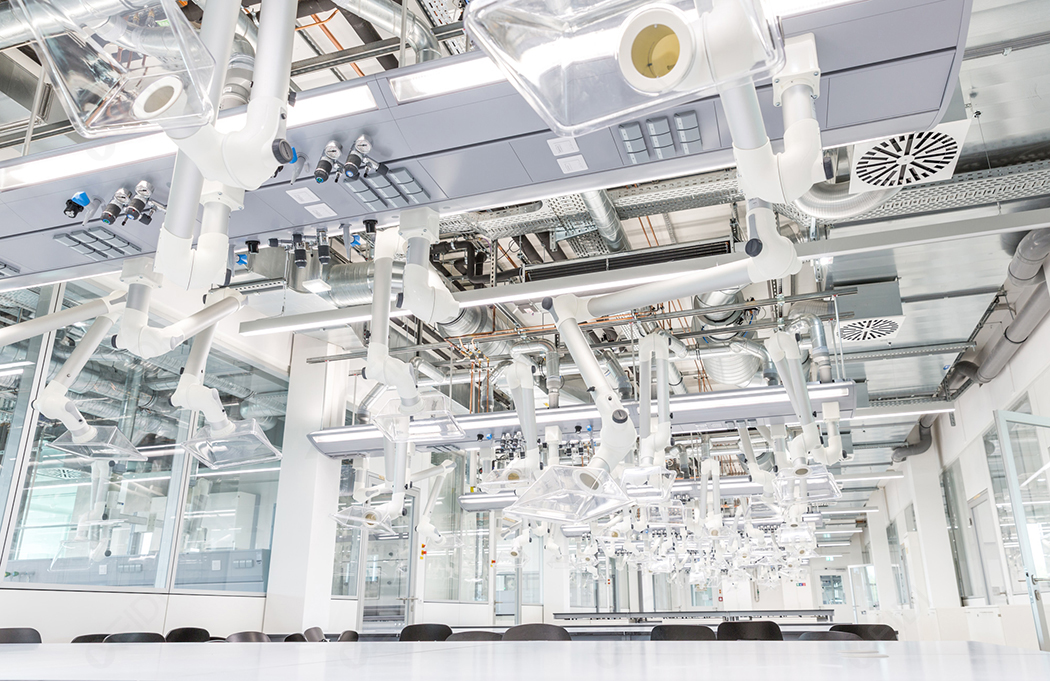Welcome to the official website of Xidi laboratory, the laboratory design and decoration recognize Xidi!
|
|
Home >> News >> Technology
文章出处:Technology|阅读量:1020|发表时间:2020-07-24
The instrumental analysis laboratory can be divided into a general extraction instrument room and a precision instrument room. Its main function is to use various analytical instruments to perform quantitative or qualitative analysis of experimental samples. The same instrument analysis laboratory has higher indoor requirements than chemical laboratories, generally requiring constant temperature and humidity, airflow, air purification, and exhaust. In the case of instruments with high requirements for anti-vibration, in addition to considering the location of the laboratory, it is also necessary to consider setting up independent equipment anti-vibration foundation and vibration isolation measures. The instrument analysis laboratory needs to be designed and decorated differently according to requirements and needs, so what are the requirements for the interior decoration of the instrument analysis laboratory?
I, partition, smallpox
1. The instrument analysis laboratory should choose to use non-dust and easy-to-clean non-combustible materials. The walls and ceiling surfaces should be flat to reduce dust accumulation. At the same time, they should have sound insulation, heat preservation and sound absorption effects; in addition to fixed partitions, it is best The flexible partition method is adopted to meet the needs of instrument renewal and expansion.
2. The air outlets, fire detectors, lamps and various boxes on the wall installed on the indoor ceiling should be arranged in a coordinated manner to be neat and beautiful.
3. The indoor color should be light, elegant and soft, with a fresh and tranquil effect, instead of using large areas of strong colors. Matte or matt surfaces should be used for furniture and rooms in visual work.
4. Various indoor pipelines should be laid hidden, and technical shafts should be set up when the pipeline passes through the floor.
II, the floor
For small and ordinary instrument analysis laboratories, only a fixed floor can be used to meet the needs. For large precision instrument analysis laboratories, such as mass spectrometry rooms, X-fluorescence spectroscopy rooms and other laboratories, overhead is required due to complex pipelines and many cables. floor. If the air supply method is from bottom to top, the space under the raised floor needs to be used as the air supply static pressure box. The general floor structure has the following types:
1. Raised floor: also known as fabricated floor, it consists of panel blocks of various specifications and materials, adjustable supports, beams, cushions, etc. Raised floor is used as a space for installing equipment, laying all kinds of pipelines, cables and air-conditioning static pressure box on the floor of the instrument room. Raised floor should be of light mechanical weight, excellent performance, smooth surface, high strength, flexible interchangeability, dimensional stability, decorativeness and good texture, and can meet the requirements of flame retardant, moisture-proof and anti-corrosion.
2. Trench type: make a trench under the floor through which the cable passes. The size of the trench is generally 250mm in width and 150mm in depth. After the trench cover is diced, it is made into a movable cover, and a few aluminum flat handles are installed for opening.
3. Shield type: When the number of cables is small, they can be tied into a bundle and can be used for open wiring. In order to prevent damage to the wires, a protective cover can be added to the wires. The height of the protective cover is not to hinder the switch of the cabinet door. should.
III, doors and windows
1. The door of each room should ensure that personnel and equipment can enter and exit easily.
2. For rooms with air-conditioning and cleanliness requirements, double-sealed windows should be used for outdoor education. When using aluminum alloy windows and plastic steel windows, single-layer airtight windows with insulating glass can be used to ensure the thermal performance of the enclosure wall structure.
3. Room doors with air-conditioning and cleanliness requirements should be airtight and heat-preserving one-way spring doors or equipped with automatic door closers, and open to the room. Sound-proof doors should be used for rooms with strong noise and the door that opens to the computer room.
4. The outdoor window of the instrument should face north. If restricted by conditions, when the window opens to the east, south, or west, measures such as shading and curtains should be taken to prevent direct sunlight and avoid glare.
The instrument analysis laboratory must not only have both DC and AC power supplies, and three-phase and single-phase power sockets, but also require voltage stabilization. Some instrument analysis laboratories also need to be equipped with cooling water and various gas supplies, including vacuum , Compressed air, protective gas, carrier gas, etc.; at the same time, there are also requirements for electromagnetic interference prevention, electromagnetic shielding and grounding. Therefore, when designing the laboratory, it is necessary to design and decorate according to specific needs.